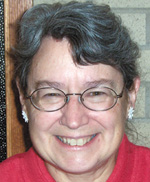By Corrine Winter

Over the past several months, I have tried to outline in this column trends that were present in the Church leading up to the Second Vatican Council. Those trends included reflection on the leadership structures and roles in the Church, increasing lay participation in the work of the Church including its liturgy, and responding to the needs of a changing world. This month I want to look at some of the immediate preparation for the council.
Pope John XXIII announced his intention to call an ecumenical council in January, 1959, to a small gathering of bishops. The bishops and all members of the Church are often described as having been greatly surprised at the announcement because of the pope’s advanced age and an apparent expectation that his would be a “transitional” papacy between the long primacy of Pope Pius XII and a pope to come later who would, perhaps, initiate some changes. Both Pope Pius XII and his immediate predecessor had considered convening a council — perhaps reconvening Vatican I, in order to finish the work of the 19th century meeting that had been abridged due to the Franco-Prussian war. An area of particular concern that was seen to remain from that council was the authority of bishops.
Whether surprised or not, many of the bishops apparently had ideas about what should be the task of a new council. An open invitation to all Catholic bishops to recommend agenda items yielded 2,150 replies from throughout the world. The replies of U.S. bishops alone filled almost 250 pages. Expectations varied widely from new dogmatic definitions to changes in Church discipline. Some thought the Queenship of Mary or her role as mediatrix would be declared dogma. Many hoped for liturgical renewal including the use of the vernacular. Finally, some bishops expressed the hope that the council would not initiate major changes but would affirm interpretations and practices already in place. Even Yves Congar, whose opinions would be highly influential in the development of the documents of the council, initially expressed concerns that perhaps the Church was not ready for a council.
In December of 1961, Time magazine included an article on preparations for the council in which the editors listed as likely topics for discussion: Christian unity, the authority of bishops, liturgical reform, religious liberty, and Church discipline including Friday abstinence and the index of forbidden books. The editors of Time predicted that the council would strongly reaffirm the Church’s opposition to artificial birth control and could take a stand against “sins peculiar to the century such as dangerous driving [and] income tax evasion.”
Gathering all the bishops’ responses and moving from them toward an agenda and preparatory documents fell to the ante preparatory commission appointed by the pope and consisting of the secretary or leader of each of the congregations of the Roman Curia, led by Cardinal Tardini of the Congregation for Extraordinary Ecclesiastical Affairs. Immediate preparation for the council was carried out by 11 commissions that prepared draft documents. Forty-three U.S. bishops served on the commissions. The efforts of the various commissions were to be coordinated by a Central Preparatory Commission. The commissions drafted 70 documents, of which seven were sent to the bishops of the world in July 1962. Topics covered in those drafts included sources of revelation, the content of the faith, Christian morality, marriage, family and virginity; liturgy, the media and the unity of the Church.
Historical accounts of the preparations indicate that neither the hierarchy nor the members of the Church were uniformly enthusiastic about the council before it began. Some feared there would be too much change. Others feared that the council would take an overly negative stance toward the modern world or toward the ecumenical movement. Pope John, however, remained steadfast in his reliance on the Holy Spirit to whom he attributed the inspiration to call a council. In his first encyclical, Ad Petri Cathedram (English title: On Truth, Unity, and Peace), he outlined needs of the Church and the world as he saw them and his hope that the council would lead to progress in addressing those needs.
In 1961, Pope John prayed, “Divine Spirit, renew your wonders in our time, as though for a new Pentecost, and grant that the holy church, preserving unanimous and continuous prayer, together with Mary the Mother of Jesus, and also under the guidance of St. Peter, may increase the reign of the Divine Saviour, the reign of truth and justice, the reign of love and peace.” In 1962, he issued an encyclical Paenitentiam Agere (On Penance), calling for penance and fasting for the success of the council. At the opening of the council, he exhorted those present to attend not to the “prophets of doom” whose constant message was the evil of the times, but rather to listen for the work of God within the world.
The history of the conciliar discussions shows that they were anything but easy-going. The bishops, together with theologians brought along as advisors for the writing of the documents, struggled mightily to agree on exactly the right message and exactly the right expression thereof. The accomplishments of the council are still being studied, interpreted and argued. But we are called to trust the Holy Spirit at work among us in that process. That does not mean the struggle will become easier, but we are called to meet the challenges.
(Corinne Winter is a professor of theology at St. Ambrose University in Davenport.)







